A rod is hinged at point P, vertically standing upward, Due to slight jerk rod starts to come down. The angular velocity of rod just after turning through angle e is (hinge is smooth)
√6gLsin(θ2)
√6gLcos(θ2)
√6gcosθL
√3g(1+cosθ)L
To solve the problem of finding the angular velocity of a rod hinged at point P after it has turned through an angle θ, we can follow these steps:
Step 1: Understand the System
The rod is initially vertical and is hinged at point P. When a slight jerk is applied, the rod starts to fall under the influence of gravity. We need to analyze the motion of the rod after it has turned through an angle θ.
Step 2: Identify Key Points
- Length of the rod = L
- Center of mass of the rod is located at a distance L/2 from the hinge point P.
- The angle θ is the angle through which the rod has turned from the vertical position.
Step 3: Determine the Change in Height
When the rod turns through an angle θ, the center of mass descends. The vertical height change (Δh) of the center of mass can be calculated as:
Δh=L2(1−cosθ)
Step 4: Apply Conservation of Energy
The potential energy lost by the center of mass as it falls will be converted into kinetic energy. The potential energy lost (PE) is given by:
PE=mgΔh=mg(L2(1−cosθ))
The kinetic energy (KE) of the rod when it has angular velocity ω is:
KE=12Iω2
where I is the moment of inertia of the rod about the hinge point P. For a rod of length L, the moment of inertia is:
I=13mL2
Step 5: Set Up the Energy Equation
Setting the potential energy lost equal to the kinetic energy gained:
mg(L2(1−cosθ))=12(13mL2)ω2
Step 6: Simplify the Equation
Canceling m from both sides and simplifying:
g(L2(1−cosθ))=16L2ω2
Multiplying both sides by 6:
3gL(1−cosθ)=L2ω2
Step 7: Solve for Angular Velocity (ω)
Rearranging the equation to solve for ω:
ω2=3g(1−cosθ)L
Taking the square root:
ω=√3g(1−cosθ)L
Step 8: Use Trigonometric Identity
Using the identity 1−cosθ=2sin2(θ/2):
ω=√3g⋅2sin2(θ/2)L=√6gsin2(θ/2)L
Final Answer
Thus, the angular velocity of the rod just after turning through angle θ is:
ω=√6gLsin(θ2)
---
The rod is initially vertical and is hinged at point P. When a slight jerk is applied, the rod starts to fall under the influence of gravity. We need to analyze the motion of the rod after it has turned through an angle θ.
- Length of the rod = L
- Center of mass of the rod is located at a distance L/2 from the hinge point P.
- The angle θ is the angle through which the rod has turned from the vertical position.
When the rod turns through an angle θ, the center of mass descends. The vertical height change (Δh) of the center of mass can be calculated as:
Δh=L2(1−cosθ)
The potential energy lost by the center of mass as it falls will be converted into kinetic energy. The potential energy lost (PE) is given by:
PE=mgΔh=mg(L2(1−cosθ))
The kinetic energy (KE) of the rod when it has angular velocity ω is:
KE=12Iω2
where I is the moment of inertia of the rod about the hinge point P. For a rod of length L, the moment of inertia is:
I=13mL2
Setting the potential energy lost equal to the kinetic energy gained:
mg(L2(1−cosθ))=12(13mL2)ω2
Canceling m from both sides and simplifying:
g(L2(1−cosθ))=16L2ω2
Multiplying both sides by 6:
3gL(1−cosθ)=L2ω2
Rearranging the equation to solve for ω:
ω2=3g(1−cosθ)L
Taking the square root:
ω=√3g(1−cosθ)L
Using the identity 1−cosθ=2sin2(θ/2):
ω=√3g⋅2sin2(θ/2)L=√6gsin2(θ/2)L
Thus, the angular velocity of the rod just after turning through angle θ is:
ω=√6gLsin(θ2)
Similar Questions
A verical thin rod is hinged at point P, due to slight push rod starts to rotate.The velocity of centre of mass of rod just after turning angle 0 is [L is length of rod] (## AAK_TST_09_NEET_19_PHY_E09_041_Q001 ##)
View SolutionA uniform rod of mass m and length L is hinged about one end and can freely rotate in a vertical plane. The angular velocity of the rod, when it falls from position P to Q. through an angle α starting from rest, is

View SolutionA rod of mass M and length L is falling vertically with speed v. Suddenly its one end gets stuck in a friciitonless hook. Find the angular velocity of the rod just after its end gets struck.
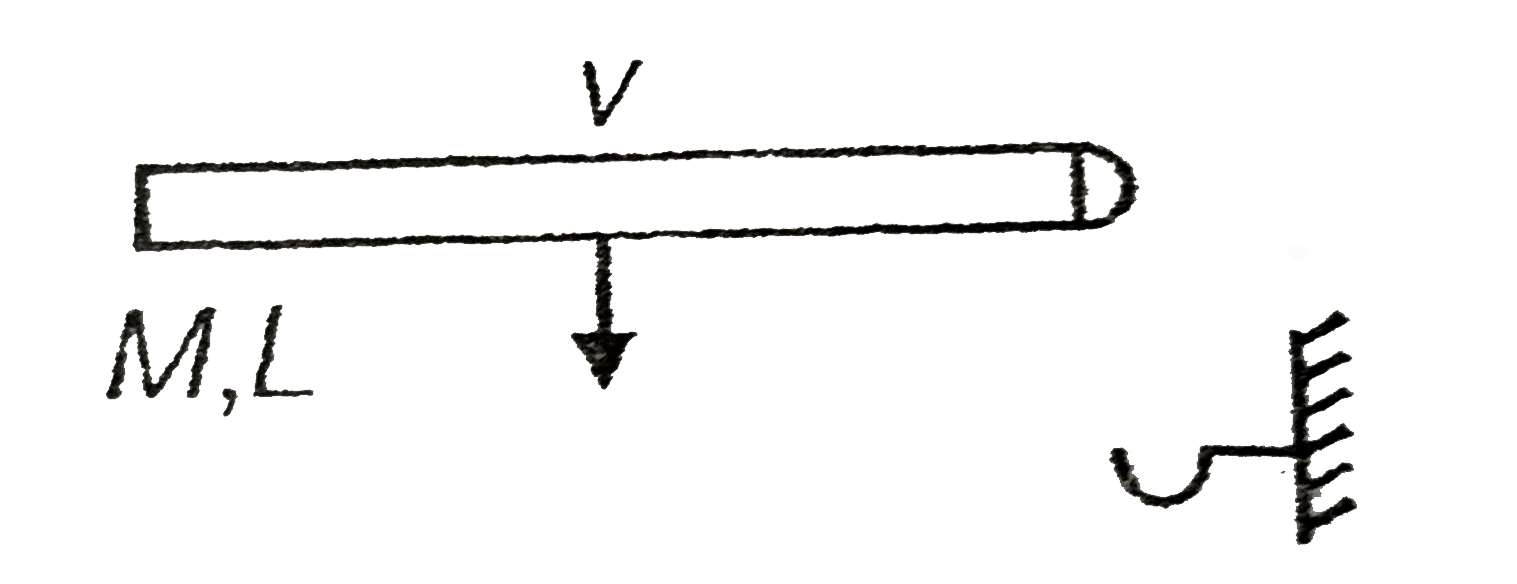
View SolutionA uniform rod of mass m length l is attached to smooth hinge at end A and to a string at end B as shown in figure. It is at rest. The angular acceleration of the rod just after the string is cut is :
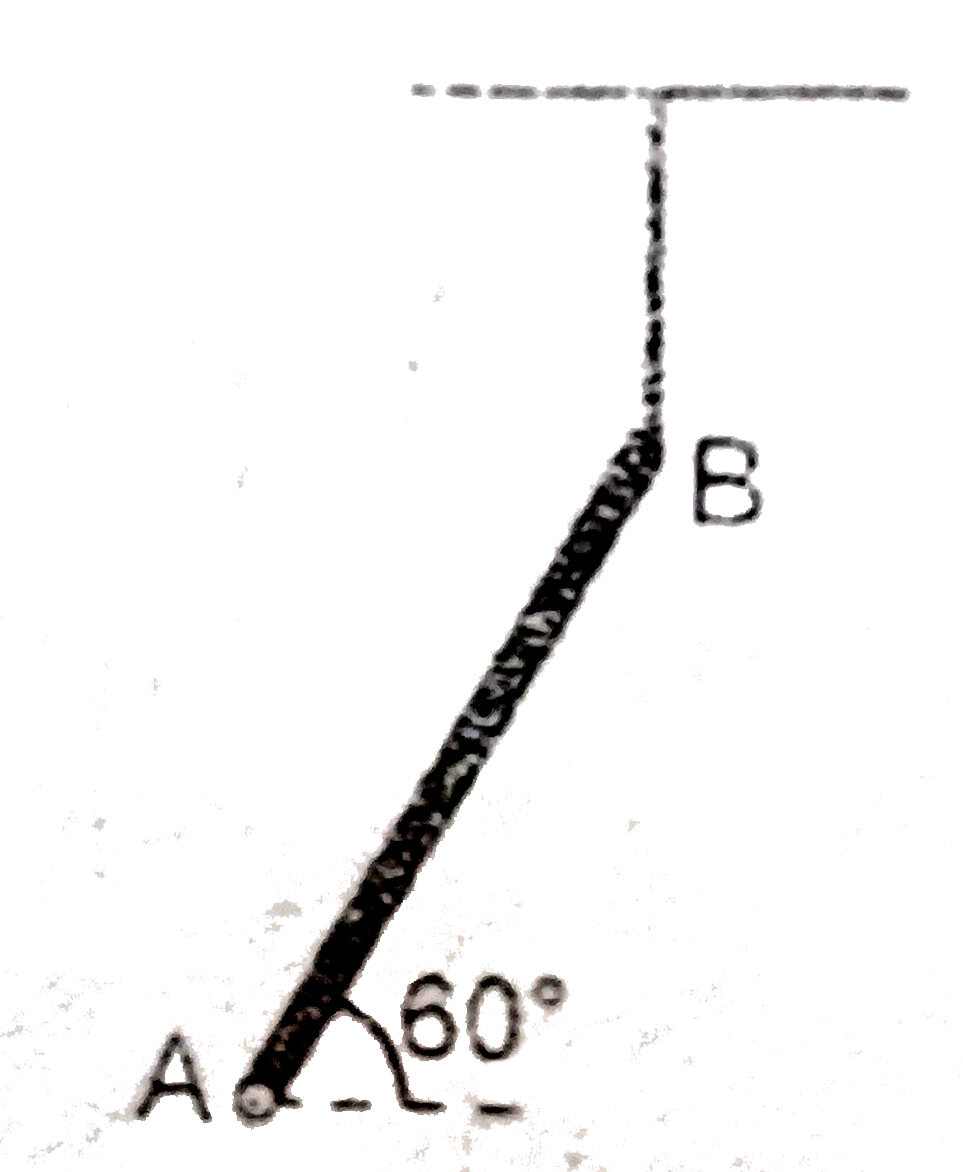
View SolutionA rod of length L is hinged from one end. It is brought to the horizontal position and released. The angular velocity of the rod when it is in the vertical position is √Kg/L. Then find the value of K.
View Solution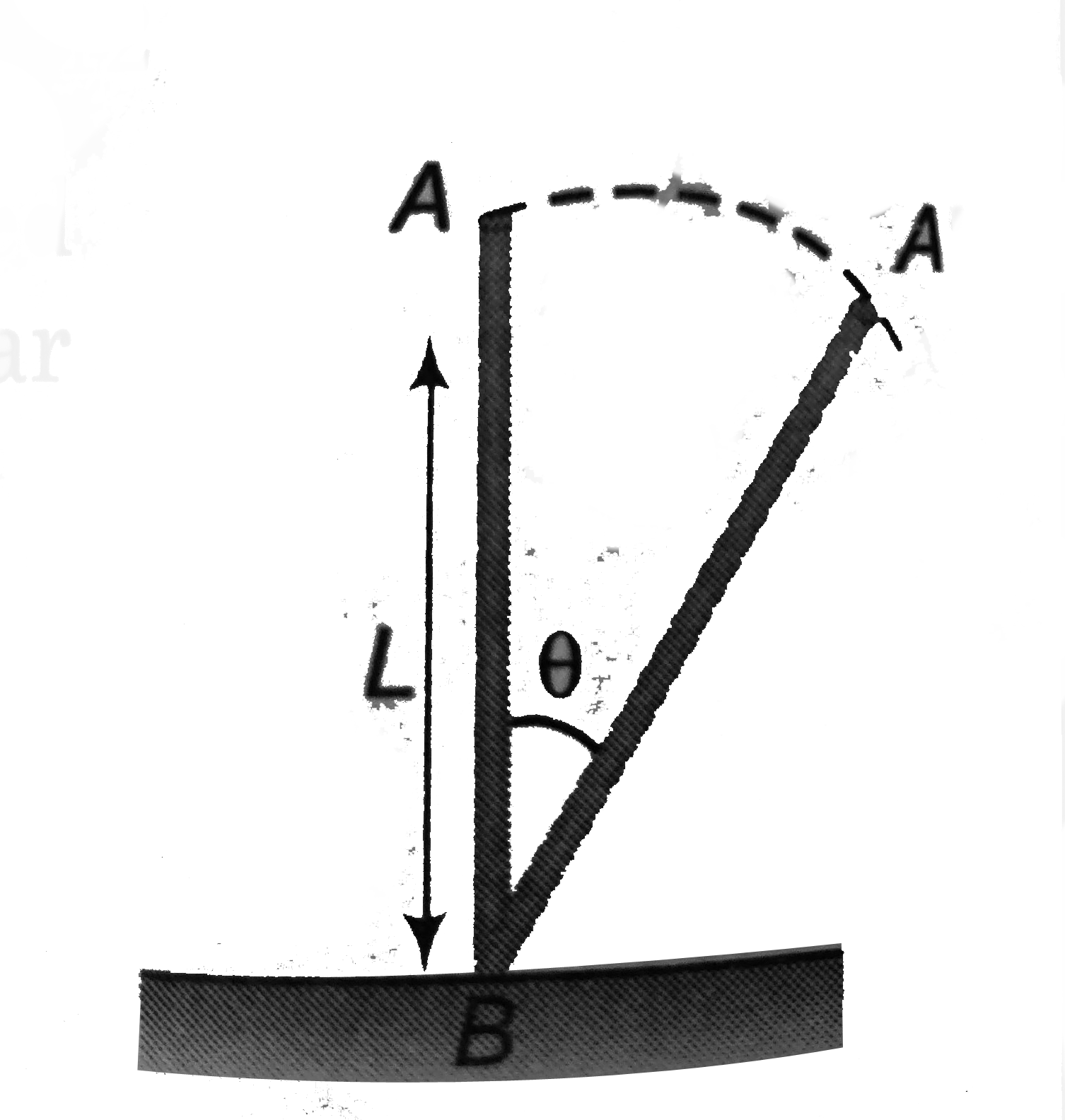
A uniform rod of length L is free to rotate in a vertical plane about a fixed horizontal axis through B. The rod begins rotating from rest. The angular velocity ω at angle θ is given as
View SolutionA rod of length L is hinged from one end. It is brought to a horizontal position and released. The angular velocity of the rod, when it is in vertical position, is
View SolutionA uniform thin rod of length l and mass m is hinged at a distance l/4 from one of the end and released from horizontal position as shown in Fig. The angular velocity of the rod as it passes the vertical position is

View SolutionA uniform rod of length l is slightly disturbed from its vertical position. Find the angular velocity of the rod just after if hits the step. (Friction is sufficient everywhere to prevent slipping)
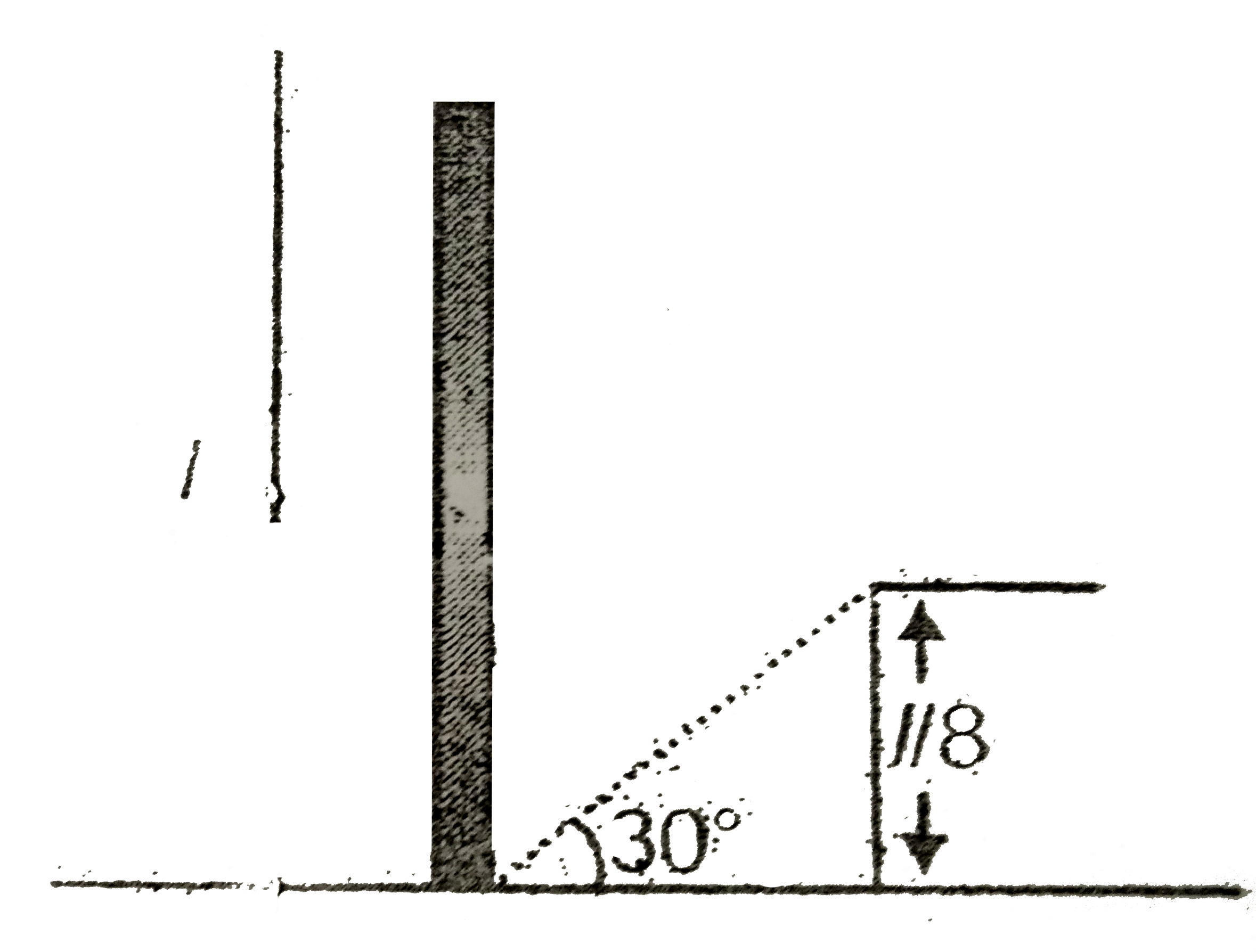
View SolutionA uniform rod is hinged at its one end and is allowed to rotate in verticle plANE. Rod is given angular velocity ω in its verticle position as shown in figure. The value of ω for the force exerted by the hinge on rod is zero in this position is
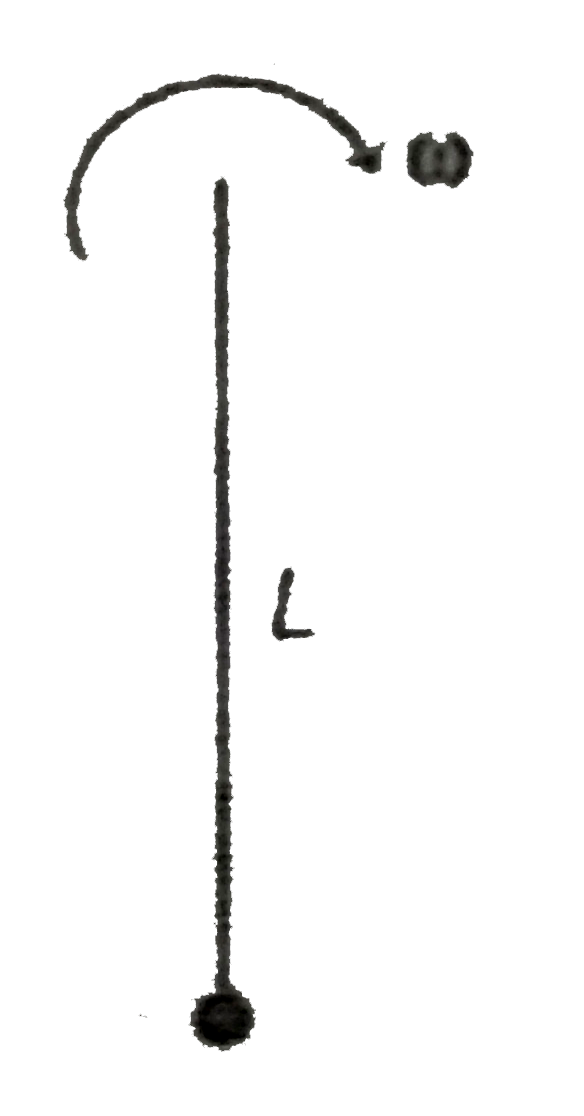
View Solution
